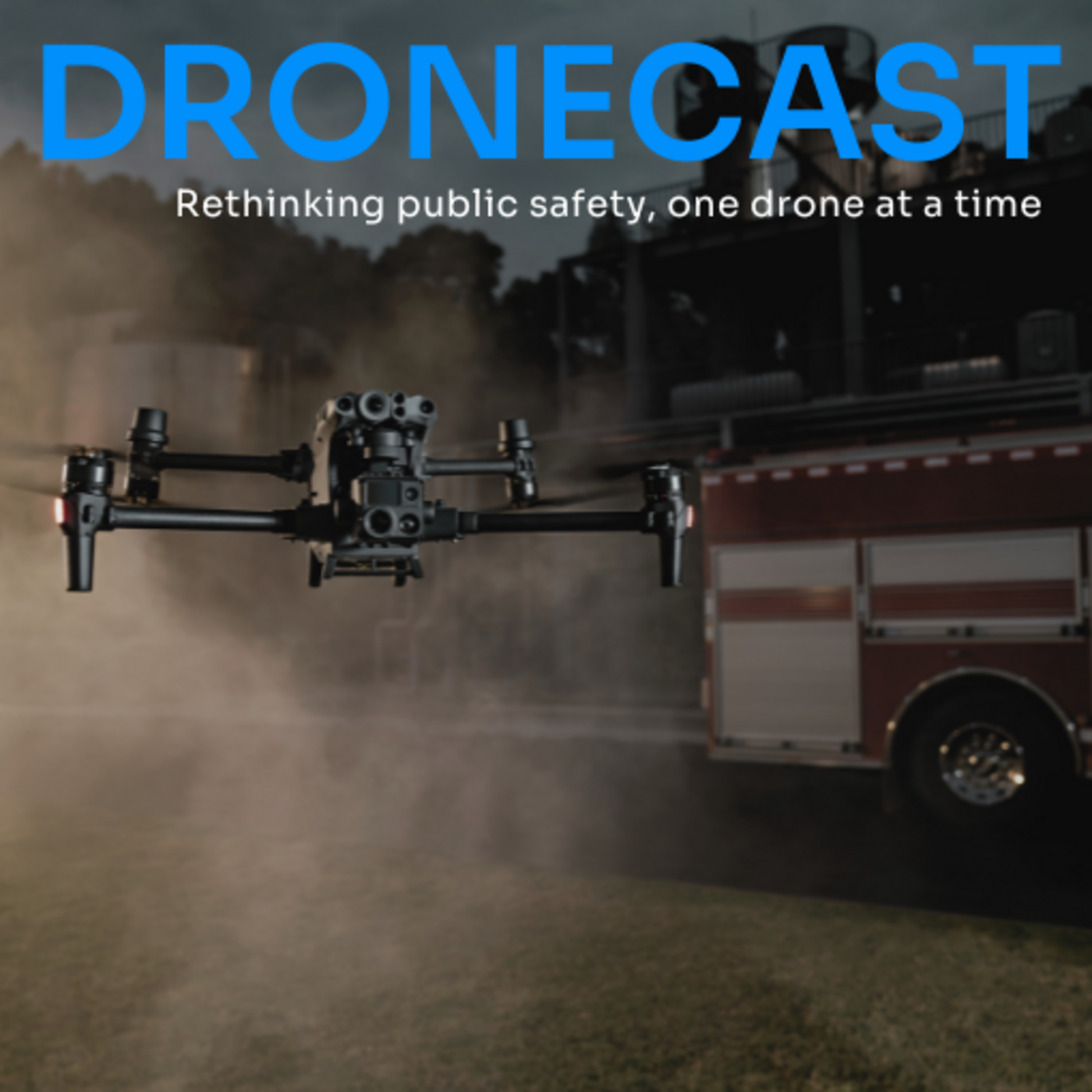Red, White, and Green: Politics, Tech, and the Fight for American Skies with Randall Warnas
August 19, 2025

In this episode of DroneCast, host Joe Kearns sits down with Randall Warnas, CEO of Anzu Robotics, to discuss the rapidly evolving world of American drone manufacturing. Randall shares how Anzu bridges the gap between Chinese and domestic drone solutions, tackles complex geopolitical and cybersecurity challenges, and builds trust in a DJI-dominated market. This candid conversation delivers strategic insights for anyone invested in the future of secure, US-based drone technology.
In this insightful episode of DroneCast, host Joe Kearns interviews Randall Warnas, CEO of Anzu Robotics, about the opportunities and challenges of building a leading American drone company. With a background spanning years in the drone industry, Randall offers a behind-the-scenes look at how Anzu has quickly positioned itself among the top five largest drone manufacturers in its first year of operation—serving public safety agencies, utilities, agronomists, and surveyors seeking secure, non-Chinese drone solutions.
The discussion explores how Anzu leverages licensed technology to deliver commercially viable products while maintaining strict data security standards. Joe explains the delicate balance between affordability, capability, and compliance, offering a practical roadmap for navigating a market long dominated by DJI. He also unpacks the “Decision Matrix” for understanding drone market segmentation, the importance of community building, and why focusing on commercial applications can be more sustainable than chasing defense contracts.
From market positioning to geopolitical navigation, Randall shares how transparency, American values, and strong industry relationships create long-term trust and growth. The episode delivers a rare blend of technical, strategic, and relationship-building insights for drone professionals, policymakers, and commercial operators alike.
What You'll Learn:
- How to bridge the gap between Chinese and domestic drone manufacturing while ensuring security and affordability
- Strategies for positioning American drone companies
- Why customer engagement and community building are critical to long-term success
- How to navigate complex geopolitical and regulatory challenges in drone manufacturing
- The “Decision Matrix” for understanding drone market segmentation
- How to identify genuine market opportunities versus misleading projections
- The advantages of focusing on commercial applications over defense contracts
- Why transparency and American values are key to building trust in the drone industry
- How to balance technical innovation with real-world market needs
Helpful Links:
- Fill out the Audience Form here.
- Explore more episodes and insights on the official DroneCast website: https://www.dronesense.com/dronecast
- Ready to launch or enhance your drone program? Get Started with DroneSense today!
- Parrot, ANAFI UKR Tech Sheet: https://5n8jp.share.hsforms.com/2oWfNvmGLRCeKUWcJGtFbBg
Episode Highlights:
- [05:22] The Decision Matrix for Drone Selection - Randall Warnas introduces a clear decision matrix for organizations evaluating drone purchases, starting with whether they can use DJI or Chinese-manufactured drones. For those who cannot use Chinese drones due to security requirements, the next tier involves evaluating domestic and Blue UAS options, which often come with higher costs and unnecessary features. Kearns positions Anzu in a strategic middle ground, offering secure, non-Chinese manufacturing without the premium pricing of military-spec systems. This approach specifically targets commercial users who need reliable, cost-effective drones without thermal capabilities or military-grade features. By manufacturing in Malaysia and securing data with US companies, Anzu provides a practical solution for organizations navigating drone procurement challenges.
- [14:31] The Power of Active Listening in Industry Leadership - Warnas emphasizes the importance of truly listening to customer needs and industry feedback rather than dismissing new ideas outright. Through his mentorship program offering "career therapy" sessions, he's accumulated over 60 hours of direct conversations with industry professionals, gaining invaluable insights into real market needs. This approach has helped him identify genuine opportunities while avoiding common pitfalls that trap less experienced manufacturers. By focusing on consistent feedback patterns across different stakeholders, he's able to make more informed decisions about product development and market strategy. The result is a more grounded approach to building solutions that actually serve customer needs rather than chasing speculative market opportunities.
- [19:28] Building Positive Industry Relationships - Warnas advocates for a consciously positive approach to industry engagement, particularly on social media platforms where negativity often dominates. He emphasizes the importance of supporting competitors' achievements and avoiding toxic interactions that can damage both personal and company reputations. This strategy has helped build genuine relationships across the industry, creating valuable networks and opportunities for collaboration. By focusing on constructive engagement and authentic relationship building, companies can create a stronger foundation for long-term success in the drone industry. The approach has proven particularly valuable in navigating complex industry dynamics and building trust with potential partners and customers.
- [28:49] Understanding Real Market Dynamics vs Market Reports - Warnas warns against relying too heavily on market research reports that often present inflated projections about the drone industry's growth. He points out that many manufacturers make strategic mistakes by building products based on these reports rather than actual customer needs and market realities. The key insight is that while reports might suggest massive market opportunities, the practical reality often involves much smaller, more focused customer segments with specific needs. By maintaining close customer relationships and understanding actual use cases, companies can develop more targeted and successful product strategies. This approach helps avoid the common pitfall of creating over-featured products that miss the mark on actual customer requirements.
Dronecast: Rethinking Public Safety, One Drone at a Time Podcast is handcrafted by our friends over at: fame.so
Previous Guests include: Matt Rowland, Jason Burnside
Check out our 3 most downloaded episodes:
Previous Guests include: Matt Rowland, Jason Burnside
Check out our 3 most downloaded episodes: